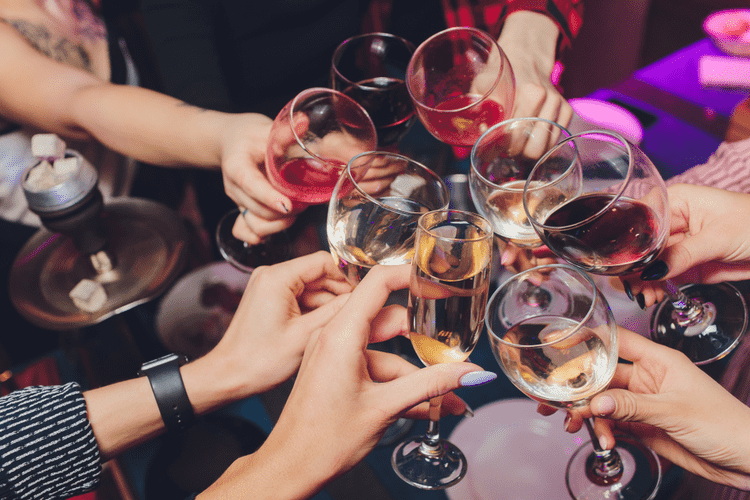Consequences of Alcohol Use in Diabetics PMC
Posted on June 22, 2021
Yet, anyone drinking large amounts of alcohol is at risk for blackouts. Even with cues, you’re unlikely to remember what happened during this time. With all the focus on carbs, it’s easy to forget that alcohol also has calories.
- The hormone insulin lowers blood sugar (glucose) levels when blood sugar is too high.
- So you may find that one bottle of beer calls for 1 unit of insulin while two glasses of pinot grigio doesn’t require any insulin.
- If this happens, they will not remember anything that they did while they were drinking.
- Questions about blackouts during routine medical visits could serve as an important simple screen for the risk of alcohol-related harms.
These include body weight, body fat percentage, and key enzyme levels. Your liver will choose to metabolize the alcohol over maintaining your blood glucose, which can lead to hypoglycemia. The liver often makes this choice when you drink without eating food—so consider snacking while you sip. If you normally take your long-acting insulin dose every night at 10 p.m. But you’re downtown with your friends and plan on having quite a few drinks, take your long-acting insulin as close to normal as possible without risking forgetting entirely. Will have essentially no noticeable impact on your blood sugars, especially if it means you made sure to take it before the night got too rowdy.
further reading
And that means more time spent with alcohol impacting your blood sugars, too. On the flip-side, you may become so drunk that you forget to take your evening long-acting insulin dose or you forget to dose insulin for the pizza and cake you ate a party. Then, while still unconscious, your blood sugar is rising to dangerously high levels, putting you at risk for diabetic ketoacidosis, coma, or death.
Ketoacidosis typically occurs in patients with type 1 diabetes who completely lack insulin. In rare cases, however, the condition also may affect people with type 2 diabetes. In a milder form, ketoacidosis may even occur in people who are fasting. In those people, insulin levels are diminished, because the fasting has considerably lowered their blood sugar levels, thereby depriving the pancreas of its stimulus to produce and secrete insulin. Gluconeogenesis, which also occurs primarily in the liver, involves the formation of new glucose molecules from alanine and glycerol.
Alcohol and Diabetes
While moderate alcohol consumption lowers blood sugar, heavy consumption is harmful to diabetes and other aspects of health. A daily cocktail or two may improve blood glucose (blood sugar) management and insulin sensitivity. If you have one or more drinks a day, you may find that your A1C is lower than during times you weren’t drinking. But if you don’t drink regularly, this doesn’t mean you should start.
Blackouts typically occur after a person’s BAC has reached or exceeded 0.22 percent. Although experiences with blackouts can vary significantly diabetes and alcohol blackouts from one individual to the next. The hormone insulin lowers blood sugar (glucose) levels when blood sugar is too high.
Alcohol and hypoglycemia
Glucose is the main source of fuel for the body and brain, so you can’t function well if you don’t have enough. Patients being treated for alcoholism who have diabetes can be at ease at our facility, knowing that they’ll eat healthy, gourmet meals and also engage in activity therapies, like meditation and yoga. A cardiac syncope is more serious as it could signal an underlying problem with the heart. Tachycardia, bradycardia, or other types of hypotension could cause a cardiac syncope.


Type 2 diabetes, which in most cases develops in people over age 40, has a somewhat different pathophysiology than type 1. People with type 2 continue to produce insulin in early disease stages; however, their bodies do not respond adequately to the hormone (i.e., the patients are resistant to insulin’s effects). Thus, insulin does not lower blood sugar levels to the extent that it does in people without diabetes.
While feeling a bit dizzy or drowsy after drinking does not always signal harm for a non-diabetic, for diabetics this can signal larger problems. Severe hypoglycemia can lead to serious problems, including seizures or unconsciousness, that require emergency care. Make sure your family, friends and co-workers know what to do in an emergency.
- Accordingly, physicians who treat diabetics known to consume large amounts of alcohol must be aware of the risk of alcoholic ketoacidosis in those patients.
- Because females, on average, weigh less than males and, pound for pound, have less water in their bodies, they tend to reach higher peak BAC levels than males with each drink and do so more quickly.
- Low blood sugar and alcohol can both cause symptoms like blurred vision, slurred speech, sedation, and impaired coordination.
- The more complicated the meal (hello lasagna or Chinese food, high in both fat and carbs), the more complicated dosing your insulin around that meal with alcohol onboard too will be.
- It’s important to monitor your blood sugar levels regularly and keep track of how you’re feeling when your blood sugar is low.
It’s crucial that you approach each type of alcohol with an awareness that it might affect you differently than the last type of alcohol you drank. At the end of the day, no one expects you to abstain from alcohol for the rest of your life just because you’ve been diagnosed with type 1 or type 2 diabetes. And unless you have other health conditions that call for avoiding alcohol, there’s no reason why you can’t enjoy a refreshing glass of wine or unique microbrew now and then.

